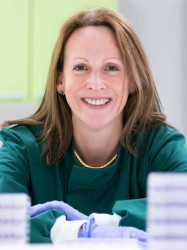BibTex format
@article{Eales:2021:10.1101/2021.12.17.21267925,
author = {Eales, O and Page, AJ and de, Oliveira Martins L and Wang, H and Bodinier, B and Haw, D and Jonnerby, J and Atchison, C and Ashby, D and Barclay, W and Taylor, G and Cooke, G and Ward, H and Darzi, A and Riley, S and Chadeau-Hyam, M and Donnelly, CA and Elliott, P},
doi = {10.1101/2021.12.17.21267925},
title = {SARS-CoV-2 lineage dynamics in England from September to November 2021: high diversity of Delta sub-lineages and increased transmissibility of AY.4.2},
url = {http://dx.doi.org/10.1101/2021.12.17.21267925},
year = {2021}
}

